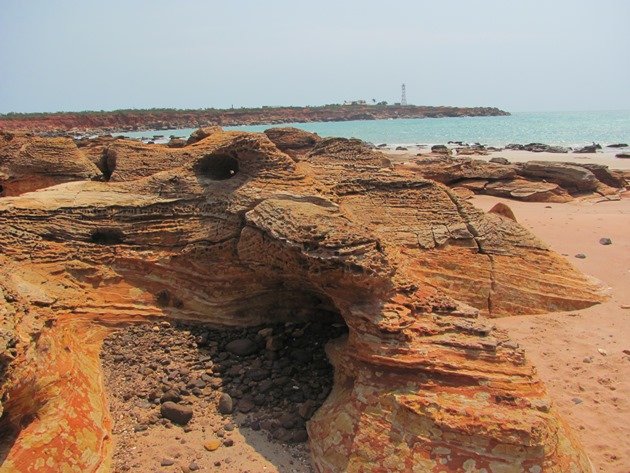
Cable Beach in Broome extends south to a point known as Gantheaume Point, which is famous for the wide variety of dinosaur footprints that can be observed at low tide. It is a beautiful location with bright red cliffs and a wide variety of shorebirds during our summer months, though not in the large numbers that you may observe in other places around Broome. The lighthouse at the point itself has been a nest-site to a pair of Eastern Ospreys for many years and they fish in the waters around the point. There are often large flocks of Terns present and they can be observed loafing around on the rocks and sand when they are not feeding at sea. Caspian Terns, Whiskered Terns, Common Terns, Crested Terns and Lesser Crested Terns can be found at this location at different times of year and each visit provides different opportunities due to the large tidal range in Broome. With a tidal range of up to ten metres it is worth planning your trip, because if the tide is in on this section of beach then there will be no beach at all and any birds will have to roost on the surrounding rocky outcrops. Silver Gulls are always present on the beach, though the numbers do vary throughout the year. In among the Terns there are often a lot of the smaller species of shorebirds and this includes the Red-necked Stint, Red-capped Plover, Sanderling, Curlew Sandpipers, Broad-billed Sandpipers, Lesser Sand Plover, Greater Sand Plover and Ruddy Turnstone.
Terns roosting at Gantheaume Point
Terns and shorebirds roosting at Gantheaume Point
Silver Gulls, Crested Terns and Lesser Crested Tern
Caspian Terns and Silver Gulls
Over the years that we have lived in Broome the numbers of Common Sandpipers have increased steadily and are easily observed at Gantheaume Point nowadays and we have observed over a dozen in recent years. They fly forward with their erratic flight when you accidentally flush them from between the rocks, but don’t go far.
Common Sandpiper
The most common morph of the Eastern Reef Egret around Broome is the grey morph rather than the white morph and there are several birds present in the rock pools once the tide drops. At high tide they can be observed in the caves along the cliff wall in the shade.
Eastern Reef Egret-grey morph
A pair of Striated Herons reside at Gantheaume Point and are often accidentally flushed a short distance and call with a rough bark at the disturbance. They can easily be overlooked due to the expanse of rocky outcrops.
Striated Heron
There has been a Pacific Golden Plover resident for a few months each year and reliably returns from the north at the end of each migratory season. It returns to Broome with a mottled breeding plumage pattern and gradually changes its moult during its stay.
Pacific Golden Plover, Grey-tailed Tattlers and Ruddy Turnstones
There is one pair of Pied Oystercatchers that reside in this small bay and it offers excellent opportunities for hiding the chicks before they can fly. They do not tolerate other Pied Oystercatchers, but are not concerned about the presence of up to thirteen Sooty Oystercatchers. This past breeding season the pair that inhabit this area of reef successfully raised three young birds and the last chick finally left its parents at the end of 2014 and they now have the area to themselves once again.
Sooty Oystercatcher, Pied Oystercatcher and Pacific Golden Plover
Sometimes you encounter birds that you are not expecting when you wander around the rocks and we have in the past on a few occasions encountered a lone Beach Stone-curlew. The bird would have been passing through and following the coastline.
Beach Stone-curlew
Normally you encounter Brown Boobys at sea at this point, but sometimes they do come to shore to rest and on one occasion I found an exhausted bird and carefully moved it into the shade in the hope that it would recover.
Brown Booby
Black Swans you generally associate with ephemeral lakes around Broome, but on several occasions we have encountered them in the ocean at Gantheaume Point.
Black Swan
The ideal time to visit Gantheaume Point to observe birds is after the tide has turned and is pushing the birds forward, but be careful that you don’t suddenly get cut off and end up swimming! Alternatively you can visit about 2 hours after the tide has turned and the birds will be relaxed and easily observed. Sunset is beautiful from this area, but the light may restrict your observations. Access to the area is on a bitumen road and parking is available beside the race-course in the shade. The walk down onto the beach will often produce Singing Honeyeaters and Red-backed Fairy-wrens. Once the wet season rains have arrived and you can no longer visit the ephemeral lakes you can find a good selection of birds in this area.


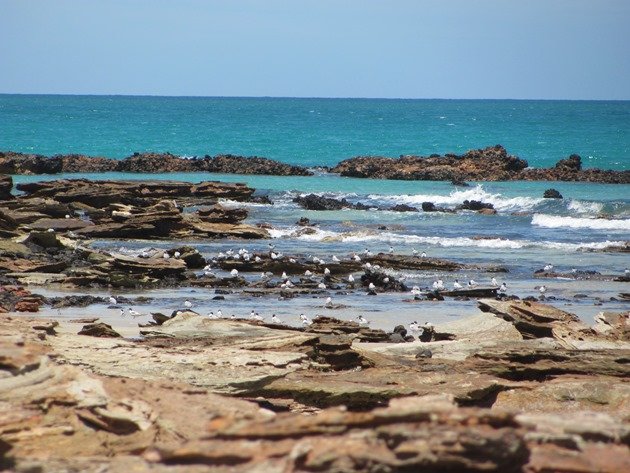
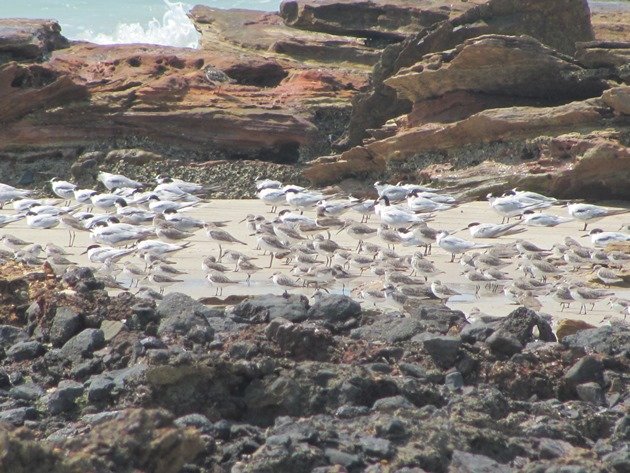
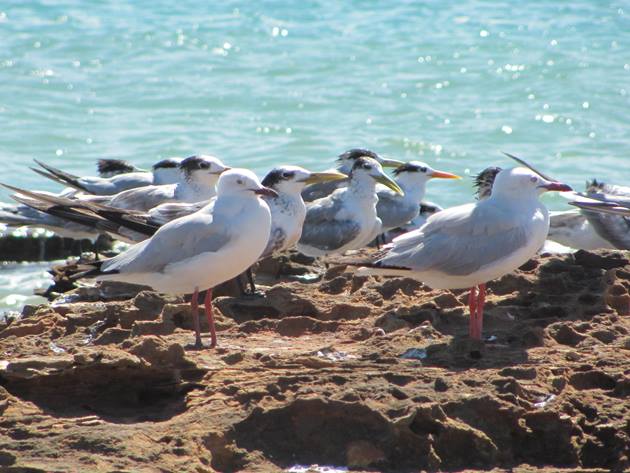
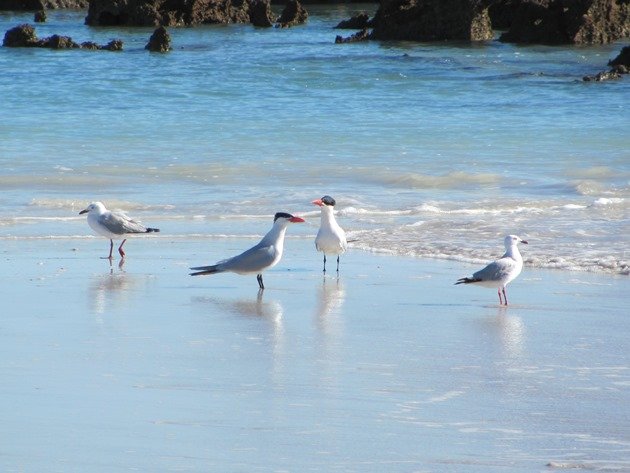
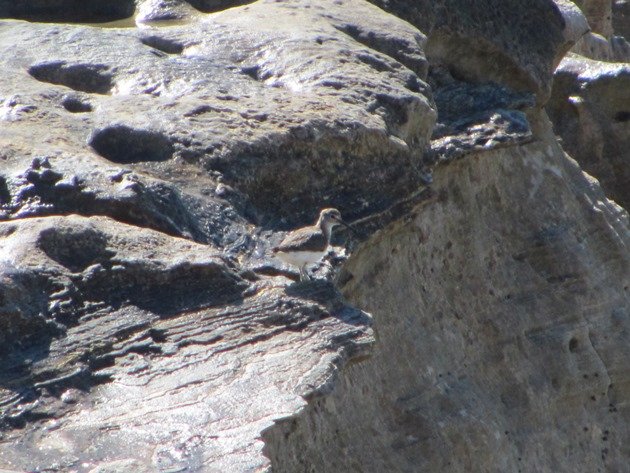
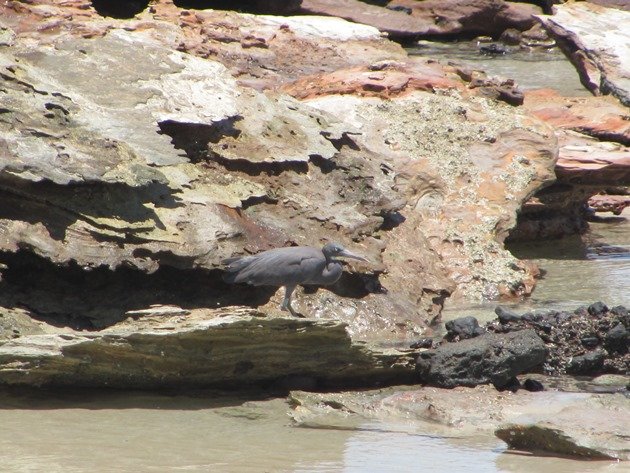
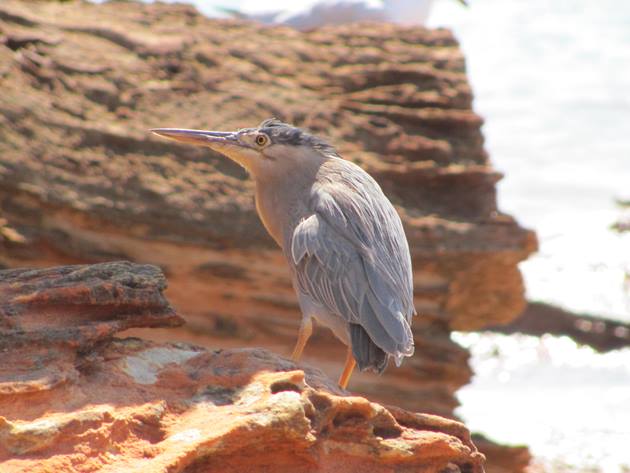
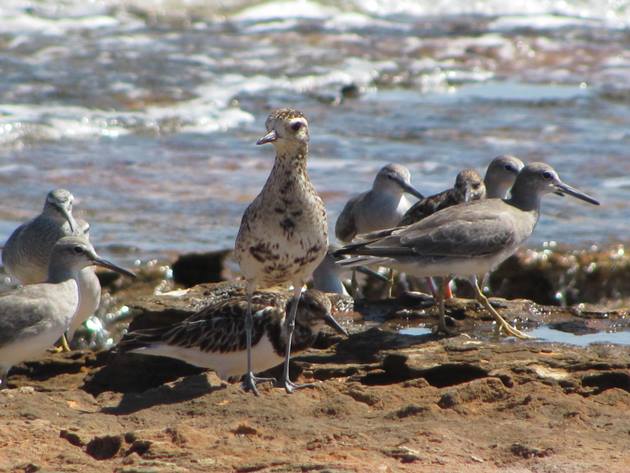
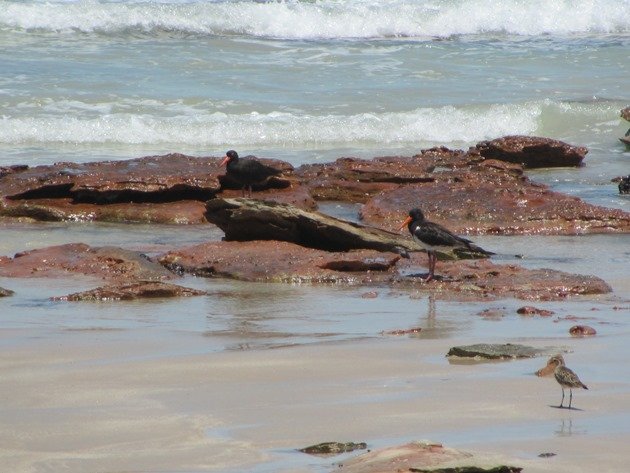
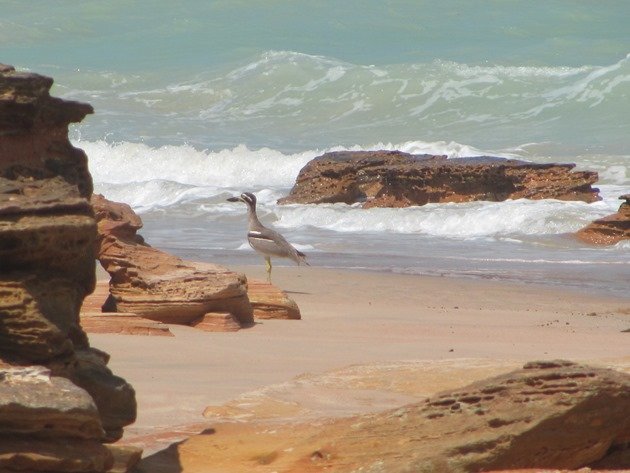
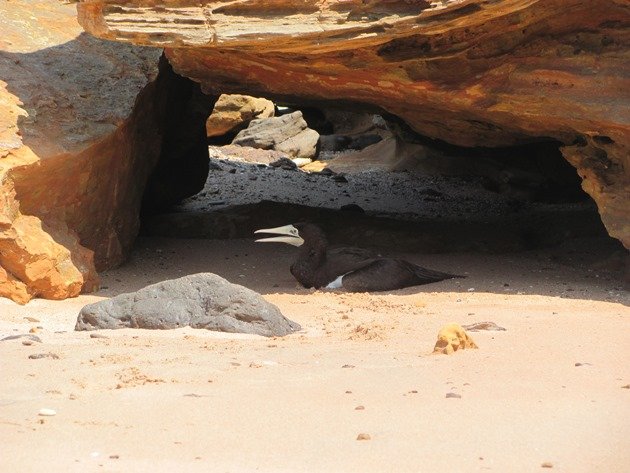
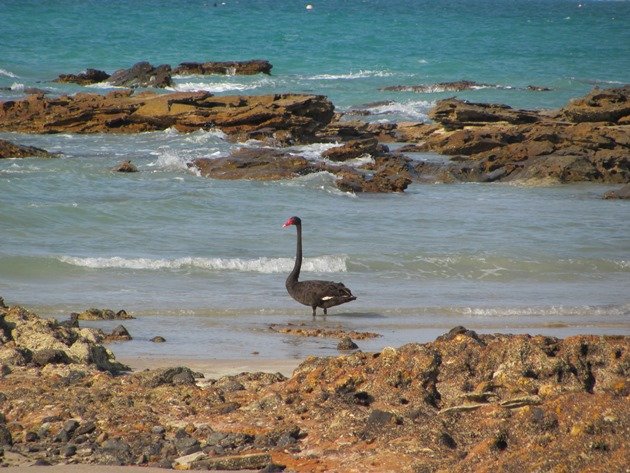
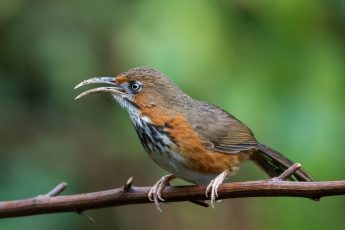
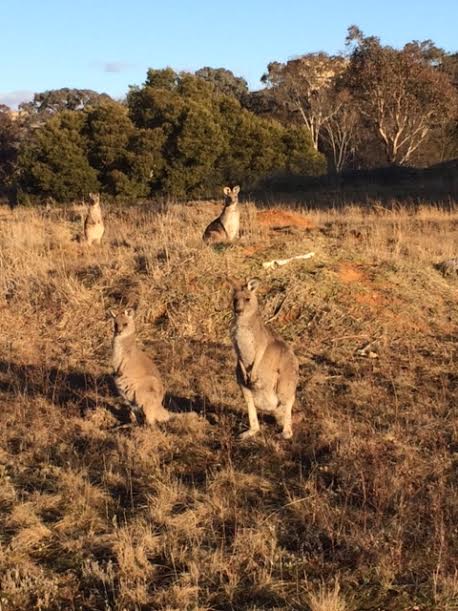

 New writers welcome – please contact us for details.
New writers welcome – please contact us for details.

















What a magical place for birding! Interesting that the Pied Oystercatcher didn’t mind all the Sooty Oystercatchers, but wouldn’t tolerate its own species. The Beach Stone-curlew and Brown Booby are quite gorgeous!
Thanks, Wendy. The Pied Oystercatchers want to protect their breeding territory from others and that’s why they don’t like intruders!